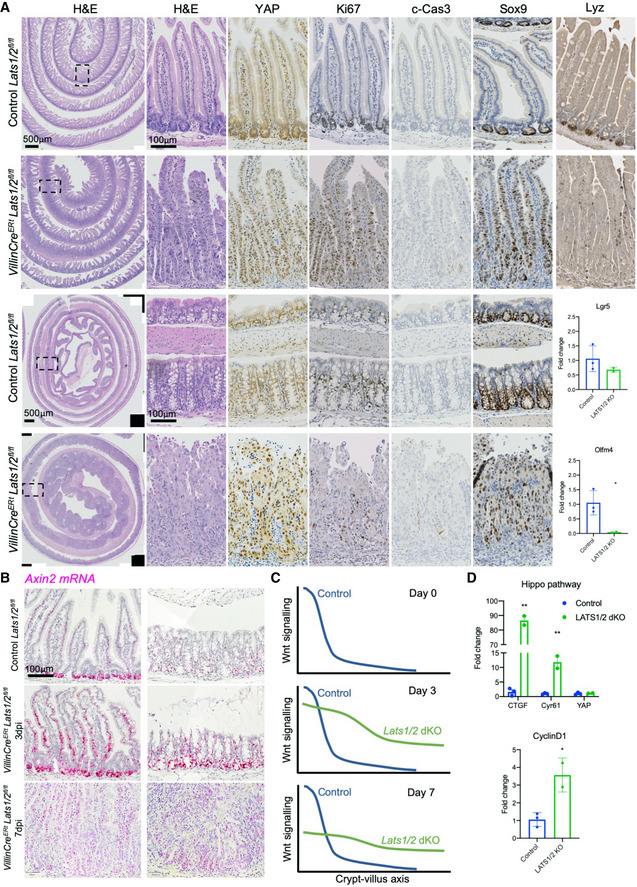Figure 2. LATS1/2 double knockout drives YAP nuclear localisation, crypt hyperplasia and a long/flat Wnt gradient.

- Murine small (top) and large (bottom) intestines isolated from control (Cre negative) Lats1flox / flox Lats2flox / flox animals and Villin‐CreERt Lats1flox / flox Lats2flox / flox animals treated with tamoxifen to induce homozygous deletion of Lats1/2 (dKO). Immunostaining for YAP and Ki67 shows a gradient of YAP expression along the crypt‐villus axis in controls, with nuclear YAP‐ and Ki67‐positive cells restricted to the crypt base (representative images from n = 5 mice). Tamoxifen‐treated (3 days i.p.) Villin‐CreERt Lats1flox / flox Lats2flox / flox double homozygous mouse intestines show an enlarged crypt compartment after 7 days with strongly nuclear YAP immunostaining in all epithelial cells and an expanded proliferative zone marked by Ki67‐positive cells. Note the gradient of YAP expression levels is maintained along the crypt‐villus axis (representative images from n = 5 mice for each genotype). (Right) Immunostaining for the Paneth cell marker Lyz reveals loss of this marker from the crypt base. (Bottom right) qPCR analysis of Wnt pathway target genes reveal that Lats1/2 dKO causes a mild reduction in Lgr5 expression, with complete loss of Olfm4. *P < 0.05.
- Axin2 mRNA expression was measured by RNAscope (red) and found to be increased in both intensity and uniformity of staining along the crypt‐villus axis in Lats1/2 dKO after 3 days post‐i.p. injection (dpi) with tamoxifen to induce the homozygous deletion of Lats1 and Lats2. At 7 dpi, Axin2 mRNA levels remain uniform along the crypt‐villus axis in Lats1/2 dKO animals, although their total level has declined compared to 3 dpi.
- Schematic diagram showing alteration of the Wnt signalling gradient upon Lats1/2 dKO in the intestine, with crypt expansion being accompanied by an elongation/flattening of the Wnt signalling gradient, whose elevated level gradually declines over time.
- qPCR analysis of YAP‐TEAD and their target genes Ctgf and Cyr61 reveal that Lats1/2 dKO causes a strong induction of Ctgf and Cyr61 expression, as expected, as well as a strong induction of the common Wnt and YAP target gene CyclinD1. *P < 0.05; **P < 0.01.
